Sunday Breakfast by Love For Breakfast
Enjoy the beauty of a simple and fresh breakfast while sitting on the bed with your eyes still clouded.

Sunday Breakfast by Love For Breakfast
Enjoy the beauty of a simple and fresh breakfast while sitting on the bed with your eyes still clouded.

Saorge – Where Time Stands Still
From silence to silence. What in the past was a Franciscan convent, has today turned into a residence for writers searching for inspiration. This monastery is a recommended destination for people who want to try the bittersweet taste of isolated places and loneliness. Built between 1633 and 1662, Saorge, with the 500 souls living in small houses clinging to the Maritime Alps, deep in the southern France, to the eyes of an addicted crowded destinations traveller this place comes first as a shock, then a discover.
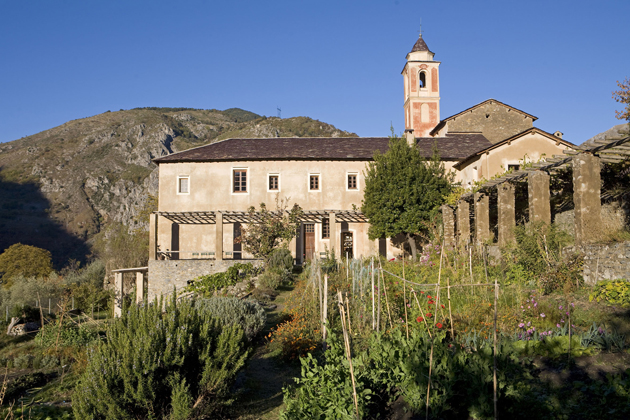
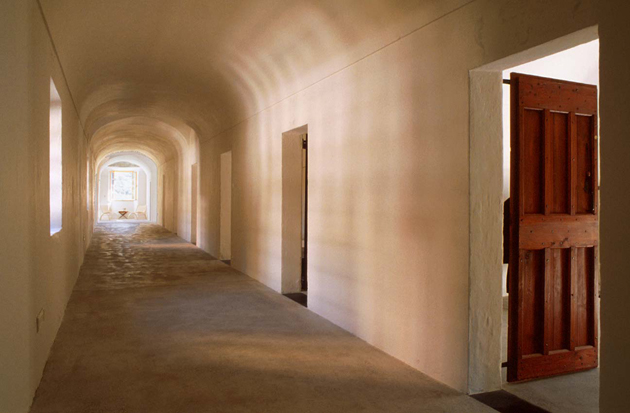
It seems that this district is known as “the French Tibet”. Similarity doesn’t arise just from the matter of altitude – Saorge is situated barely 500 meters above the sea level – but also from the peaceful and contemplative atmosphere of the town and the monastery. It towers over the valley as Potala Palace does with Lhasa, the capital of the centre of the world.
The interiors of the monastery are essential. Everything – from allegorical frescoes of refectory to the ancient Notre Dame des Miracles, the baroque church in which many religious functions were celebrated – evoke images of simple and laborious Franciscan kind of day.
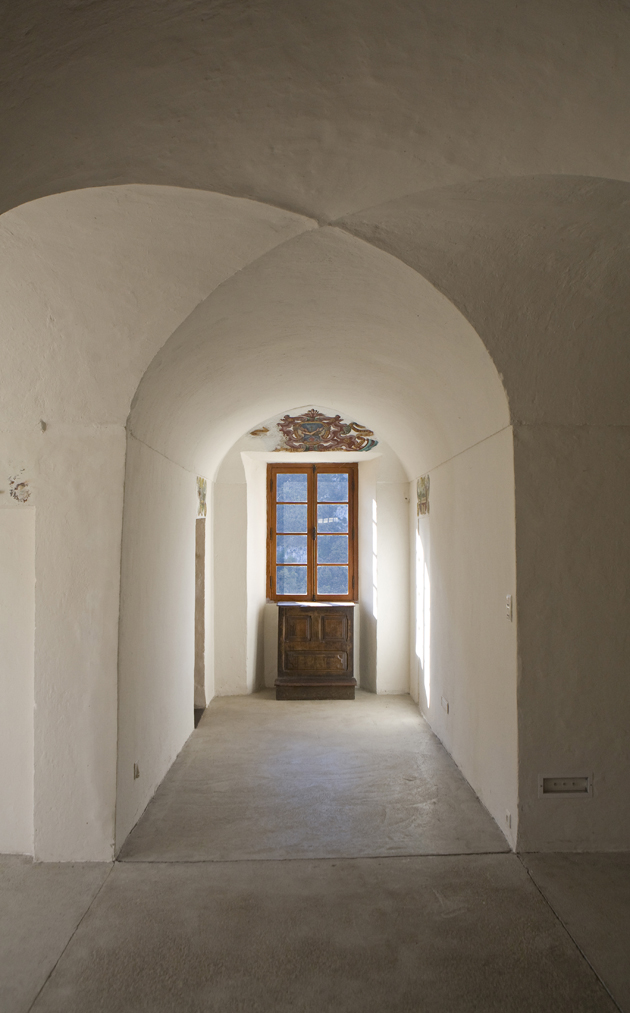
When the friars left the convent in the 90′s – after almost four centuries from its edification, during which it has been used even as a hospice – , it accommodates writers, translators and composers searching for inspiration. Everybody here lives in the way of the friars: guests eat vegetables cultivated in the kitchen garden, sleep in cells furnished with the bare minimum – a bed, a wardrobe, a night table – and use common showers. Sometimes the inhabitants of Saorge go to the monastery to meet foreigners to discuss about culture, to join debates and public lectures. They speak softly, as if there were someone to keep asleep. This is the monastery of Saorge, a small hermitage in which peace and silence are preserved.
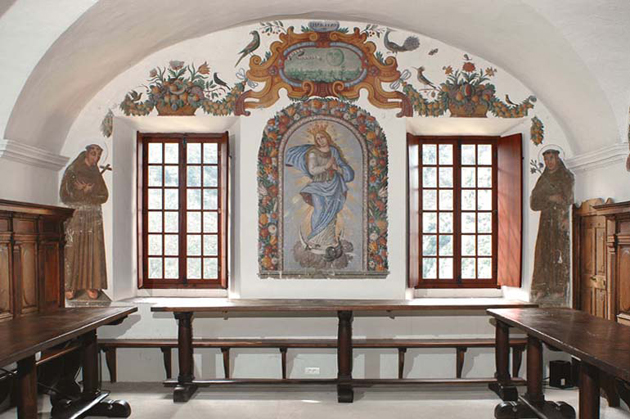
A Pie in the Sky
The renowned Treviso Comic Book Festival is coming to its end, after a full program of initiatives, involving the very best of the cartoonists and illustrators, coming from all over the world to liven up the city. XYZ will close this tracking of exhibitions, workshops and talks with a group show by the illustrators Eleonora Marton and the 2DM’s talented Elena Xausa.
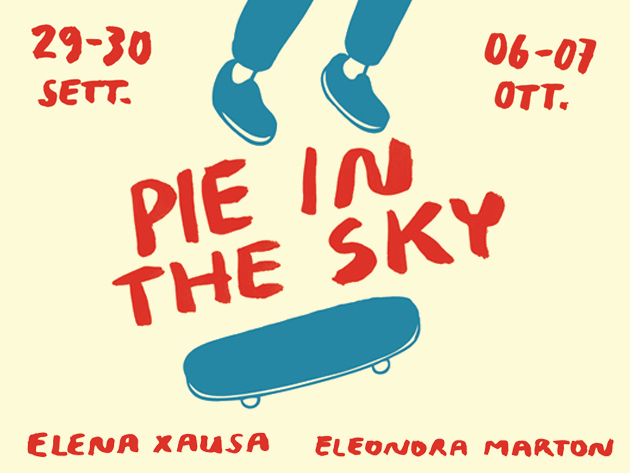
For A Pie in the Sky the space of the experimental gallery will be split in two, half part hosting fanzines and drawings on paper made by the former freelance artist, while the other one is devoted to 7 screen-printings by Xausa, limited editions with a circulation of 25 pieces each. Both the illustrators will present a bunch of works expressing their personal vision of everyday life’s source of inspirations: music and street culture communicated through a childlike and direct mark, with a cheerful, but never trivial approach. For all collectors and illustrator lovers, but also simply for those who want to take a piece of the show home, we remind you that Eleonora Marton’s fanzines and Elena Xausa’s screen-printing editions will be available to purchase directly at XYZ.
Floating faces eating LPs or animated smiling lifebuoys, sketches and wordplays will be on view and on sale at via Inferiore, 31, starting from Sunday 30th at 6pm with a Dj set/aperitif by King Of Bingo. The show will run until 7th OCtober.
Monica LombardiFashion Week Live
New York and London are well behind us, and Milano just hit the finishing line to hand over the baton to Paris. During these fashion weeks we’ve noticed that it has never been so easy to follow the runway, even without a front row ticket. That digital aspect – on not only fashion in general, but fashion week per se – has been an up-going trend for seasons, is a fact. Though, how far will this digitalization take the democratization of fashion?

Over the past seasons the number of live-streamed fashion shows has increased. Some brands distribute the work to external sites while others tie it closer to the brand and make the digital a part of their identity. Burberry is a great example of a brand that has been awarded and recognized for their digital communication, which has been given a lot of thought and place on the agenda. From an extensive social media presence to special projects like Art Of The Trench and Burberry Acoustics, the company has been sort of ‘pioneer’ on many levels. With live comments and both 3D and 2D shows, the brand has also been holding the torch when it comes to fashion week live streams.

Fashion is becoming more democratic, whether you in some areas are speaking of the aesthetics and in others of the access to it in the very same minute as the editors, buyers and bloggers on the front row. Over the last seasons we have seen cases where the audience in front of their laptop screens have been able to see the looks even few seconds before they hit the runway. The online audience often get a better and more detailed view, and their comments are broadcasted over the Internet long before the front row has even left the venue.

The discussion of live streaming and direct access for the “non-authorized” is interesting from many aspects. To engage and include the audience through digital platforms has been a natural step, and it’s now so wide-spread that it quite frankly does no longer feel as an option not to be considered. But if everyone ‘gains access’ to fashion week, where is the exclusivity? Or does a front row ticket, which gives one access to the full experience, today, become even more exclusive? Maybe it’s a question of preferences, but a sure thing is that the fashion week audience never has been as large, or wide, as it is today.

The Editorial: Supercharger
Car = evil. Car = obsolete. Or at least that’s today’s binary, politically correct (and intellectually dishonest) line on the topic. Certainly, our planet’s health could benefit from having far fewer of them farting up epic loads of CO2 while stuck on perpetually constipated motorways. And it’s lovely to imagine a world where all good cities amount to pleasant amalgamations of walkable neighbourhoods with sunny dispositions. But from Moscow to Sydney to Rome to Brooklyn to Berlin and back again, short of starting from scratch (or drastically changing our ideas about where we may and may not travel) good luck tossing that sinful old contraption of transgression! You walk across South Side Chicago and let me know how that works out for you. Take your three children to school from the Stockholm suburbs on a bike. In the dead of winter. And you should probably just abandon that villa in Tuscany (or acquire a few horses), because you’re an asshole for not living in a walkable city centre. Views!? Trees!? Quiet!? You’re mad!
Ahem.
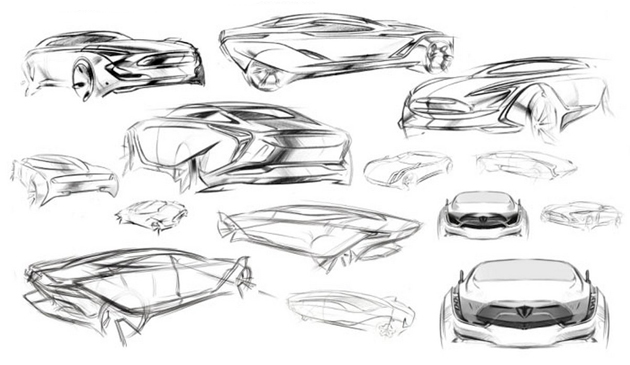
So, it’s pretty obvious, even to a dense city-dwelling smartphone-obsessed bicycle warrior, that the car is (and should be) here to stay. Much like the Internet, the car both shrank and radically enlarged the world, and it is only natural that successive innovations in the built environment were gleefully built with that miracle contraption in mind. Yes, we’re stuck within an environment that has been to a large degree built at car instead of human scale. But, consider the dramatic quality of life increase the automobile once brought! After all, hindsight is 20/20, and so on.
It was with great fanfare this week that Tesla unveiled its Supercharger charging station: a solar-powered quick charging dock of sorts that will extend the range of its already impressive electric cars, and they return electricity to the grid! In fact, they will contribute more energy in a year’s time than they will dispense to cars. Slam dunk. We’re listening.
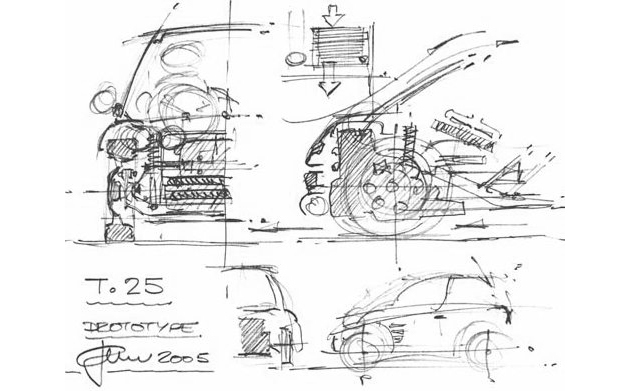

Tesla are doing a masterful job of making electrics a provocative proposition, and they are doing well to show some leg in their boutique-style shops around the world. Up until Tesla (and the less well-conceived but still beautiful Fisker Karma), electrics have generally been ugly golf carts. Now they’re mostly Nissan Leafs (which are ugly golf carts with zen green paint and a nice user-interface). And since it remains quite possible that your electric might run on juice derived from coal, their claim to eco-fame is easily contested. Innovations like the Supercharger, masterfully, sexily executed by smart, connected companies like Tesla could shift that balance overnight.
So, instead of damning the car to the scrap heap altogether, it would serve us all a bit better to practice some honest pragmatism and instead carefully consider how the personal transportation itself should look in the not-too-distant future. Imagine the post-car car, if you will. And as much as I love her, the future isn’t my bike. It’s polyamorous. Beep beep, babe.
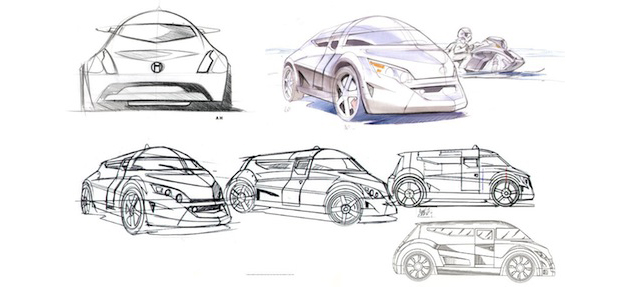
For a bit more to get excited about, watch Kevin Rose’s recent excellent Foundation interview with the very charismatic Musk.
Tag ChristofBuilding Private Cities in Honduras
Living in Europe, ‘the old lady’, we are surely often overwhelmed by the history every inch of our beloved cities may recount. We are used to seeing old blocks, narrow streets, churches and monuments all imbued with the past that has gradually shaped them, making them become what they are today, with all the consequent complexities it may carry. So it is no surprise that the Europeans can be quite shocked when seeing cities that spring out of nothing even in the USA, more so in other countries of the world, such as China, where the historical heritage seems of no importance. Thus, hearing that Honduras government has recently approved a master-plan for building three ‘private’ cities has been a complete shock.
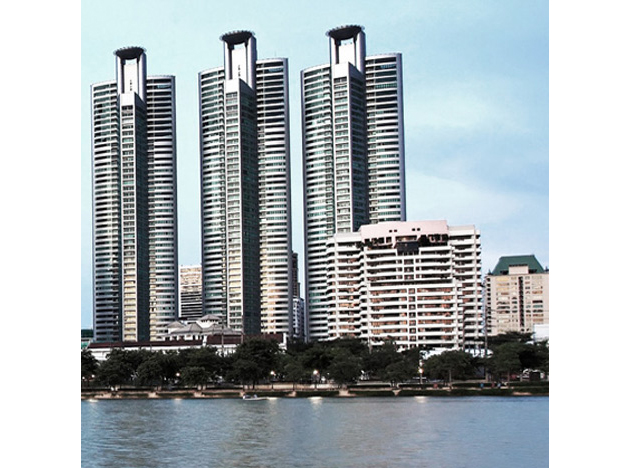
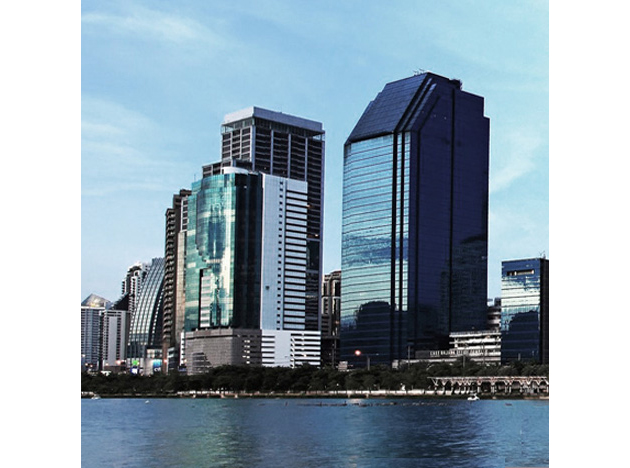
The news, reported on several websites, states that Honduras “is set to host one of the world’s most radical neo-liberal economic experiments under a plan to build from scratch the rules, roads and rafters of a ‘charter city’ for foreign investors”. What is described as ‘Silicon Valley’ of Honduras, build with the initial 15million dollars worth of financial support coming from the USA, is supposed to enable a higher standard of living for Hondurans, by means of scientific research, for a country where organized crime and political instability touch extremely high levels. Even if the news may seem quite progressive, given the fact that the official statement proposes a solution for economic growth of the country, it may be a bit more complex than that.
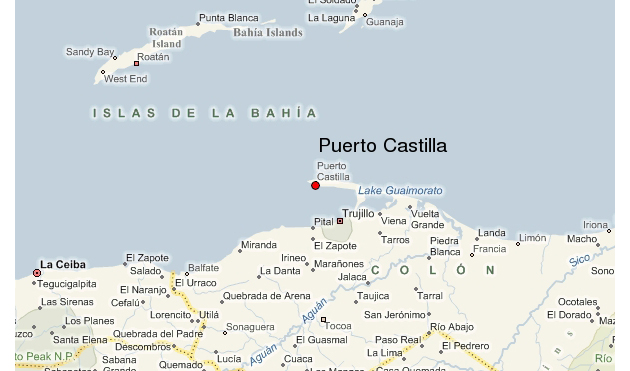
The cities, to be built near Puerto Castilla on the Caribbean coast, are to have their own police, government, laws and tax systems, a solution that may be leading more towards a ‘tax haven’ situation, than that of independent cities like Singapore, Dubai or Hong Kong, which are being discussed as an incredible model of trade and growth. What the opponents rightly fear is the creation of a “state within state”, a modern day enclave of inequality and injustice.

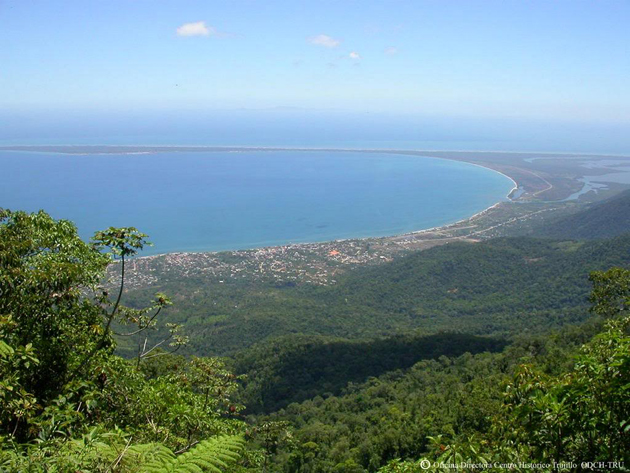
Mind-To-Hand Flow by Dan Perjovschi
Drawing could be an uncurbed instinct. For Dan Perjovschi (b. 1961, Romania), grown up in the paranoid/nationalistic vision of art imposed by the Romanian communist regime, drawing represents the most effective and direct way to express himself freely. Soon after the fall of Ceausescu’s autocracy, in the early 90’s, Perjovschi started his collaboration as illustrator with an independent, socio/political weekly magazine named Revista 22 – where 22 stands for 22nd December 1989, the day of the regime fall –, which first gave him the opportunity to let his creative and critical process flows. Through simple, childlike, “cartoonish” images, speech bubbles, and wordplays, Perjovschi communicates his unique analysis of the present social issues, mixing up frivolity and sharpness, irony and seriousness.
Moving from paper to wall as different supports for his works, the artist exploits the directness of the graffito and its performative nature combining them with the meditation of a previous observation: going around to collect ideas, equipped only with sketchbooks and marker pens, he takes notes of the surrounding world and translates his thoughts about the intricate situations of everyday life. Doing this, he creates works that can be called literary graffiti, which are little poems or conceptual statements made not only for the sake of leaving a mark, but also for making you think.
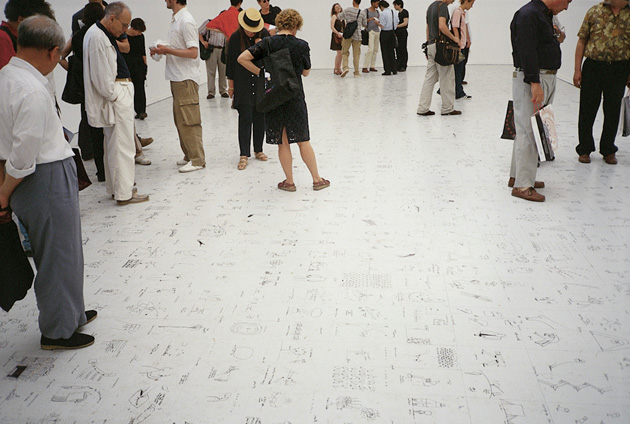
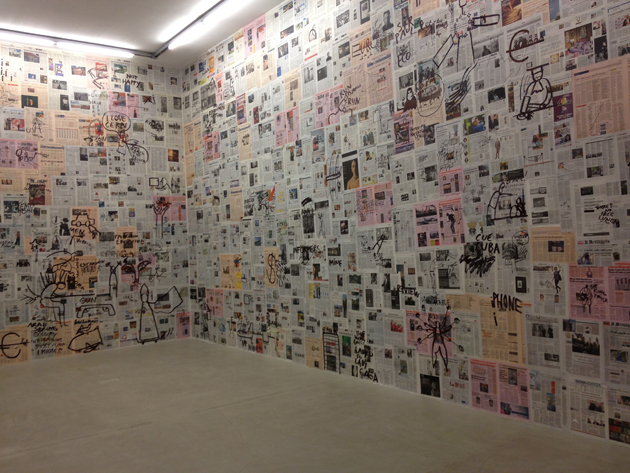
When entering the solo show by Dan Perjovschi entitled Good news, bad news, no news at Kaufmann Repetto in Milano, the impact is certainly strong. All the walls of the gallery are covered with Italian and international newspapers, reporting news about politics, economy, culture, but also rumours and plain gossip overlapped by the artist’s sketches and writings: a Don Quixote on his horse saying “I’m back!”, the texts “Nobody reads yesterday’s newspapers”, “Tragedies have no nationality” on the beige pages of the Guardian and the Observer, or the orange ones of the Financial times and Il Sole 24 Ore, along with the funny sentence “Men love Pink” on the unmistakable pink pages of the Italian sport newspaper La Gazzetta dello Sport, just to mention a few.
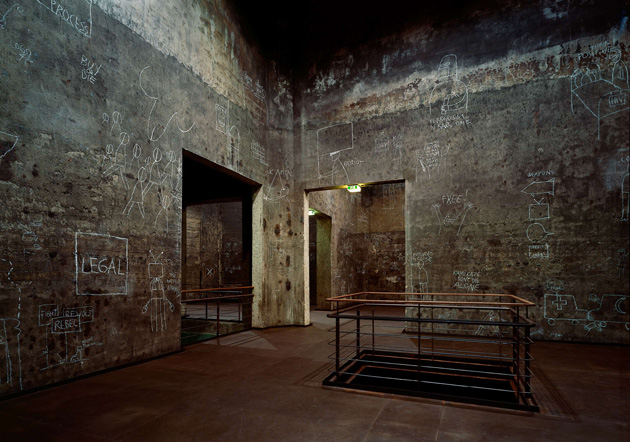
Through these huge site-specific installations Perjovschi made a portrait of our society in all its complexity. But the visit is not finished yet. A marvellous music comes from downstairs becoming – maybe accidentally – part of the main show. It comes from the project room and tickles your fancy; it is the last movement of the 9th symphony by Beethoven Ode an die Freude (Ode to Joy), which was adapted for use as the European Anthem and gives the title to the show. Going down the stairs, you see a sort of goal posts where the young artist Fausto Falchi (b.1982, Naples) hung the European flag just over an experimental Ruben’s tube that causes the changing of the flame according to the melody. The atmosphere of the room is warm and touching even if the scene is dramatic and full of meaning. Even though the flag – and everything it represents – is hardwearing, it is constantly in jeopardy because of the fire, which puts it in a dangerous and unstable position. As never before, it is so easy for us to feel this heat.
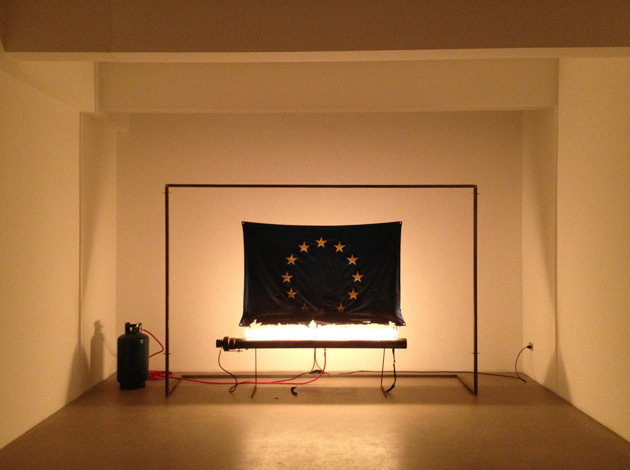
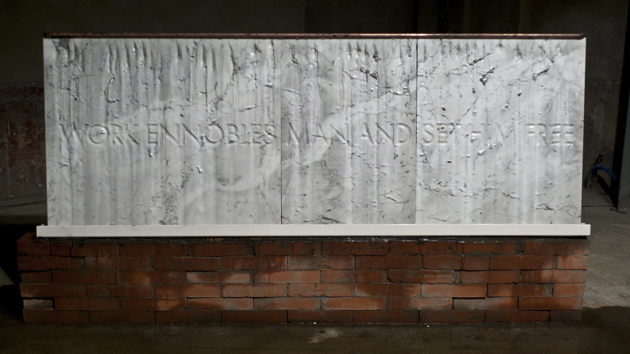
Good news, bad news, no news by Dan Perjovschi and Ode an die Freude by Fausto Falchi will run until November 2012.
Monica Lombardi – Many thanks to Kaufmann Repetto gallery staff.Design Time Capsule
To ring in this year’s London Design Festival this week, a group of luminaries from around the design world gathered to commemorate the groundbreaking on the Design Museum’s new space. Slated to open in 2015 in the former Commonwealth Institute in Kensington, the new spot is to be a massive upgrade from its present riverside space and will transform the institution into the planet’s premier museum of design.
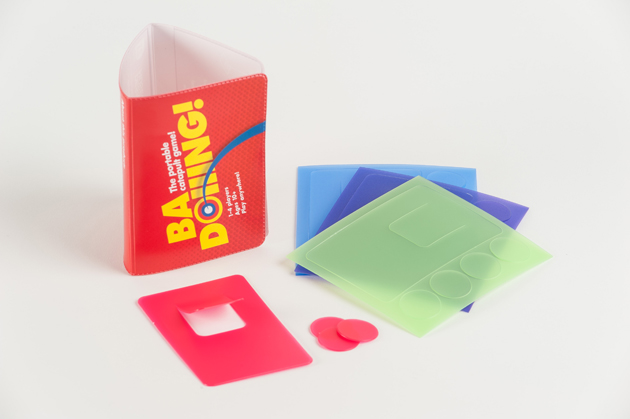
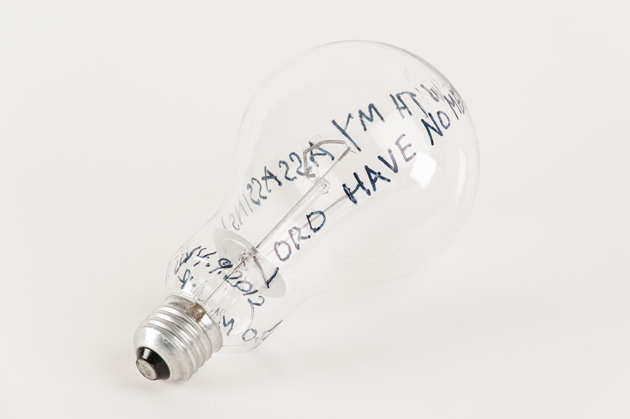
The big names invited along for the occasion each chose an item or two or three to place into a time capsule that will be buried inside the building’s foundations. And since the Robert Matthew-designed brutalist landmark is being spared the wrecking ball unlike many of its equally significant 1960s contemporaries, chances are pretty good that it’ll be around for at least as long as the rest of London stands.
Terence Conran (who has been a seminal figure behind the Design Museum since its inception) buried an iPhone 4S, a tin of anchovies, and a bottle of 2012 Burgundy (a lovely way as any to sum up humankind’s design accomplishments up to now…), while the museum’s director Deyan Sudjic added the London 2012 Olympic Torch. Kenneth Grange (who was the subject of a recent retrospective exhibition at the museum), Ingo Maurer and Thomas Heatherwick, on the other hand, opted for grand gestures of simplicity, with the former tossing in Arne Jacobsen’s iconic, minimalist Cylinder Line cafetière and the latter two together including a good old fashioned filament light bulb.
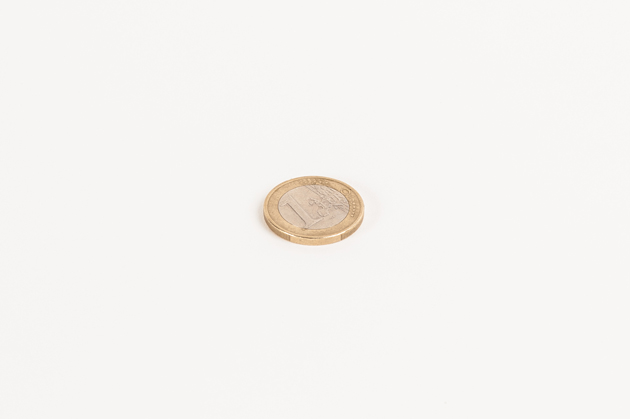
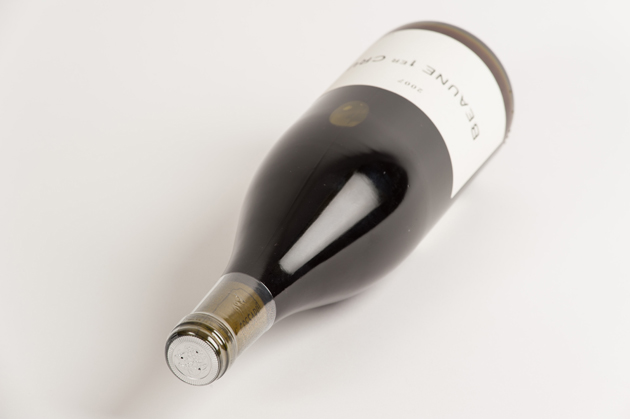
Margaret Howell, Paul Smith and Zaha Hadid – not a one of them known for modesty – fittingly dropped in examples of their own work: Howell included an image of the soon-to-be-revamped Battersea Power Station, Smith contributed his stamp design for this year’s Olympic games, and Hadid a scale model of her signature white elephant, Rome’s MAXXI. (Perhaps she’s anticipating its razing in the not-too-distant future…) But if inclusion in the time capsule signals an anticipation of erasure from general existence (will our great-grandchildren know what an Edison lightbulb looks like?), Cecil Balmond’s choice of an EU flag and a 1€ coin is more than a little thought provoking…
What would you bury?
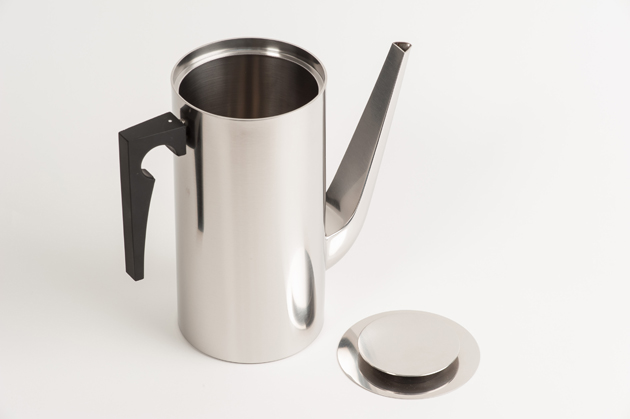
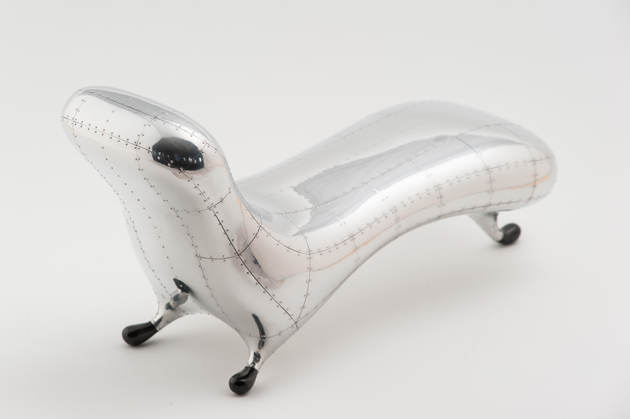
Stone Island Presents Archivio ’982 – ’012
Over the past 30 years Stone Island has built up an immense archive of garments: 20 000 pieces to be more exact. After the preview in Florence earlier this year, the brand is tonight hosting an event in their Milano store to present Archivio ’982 – ’012 – a book containing 300 images of their iconic sportswear and three decades of skills and know-how.

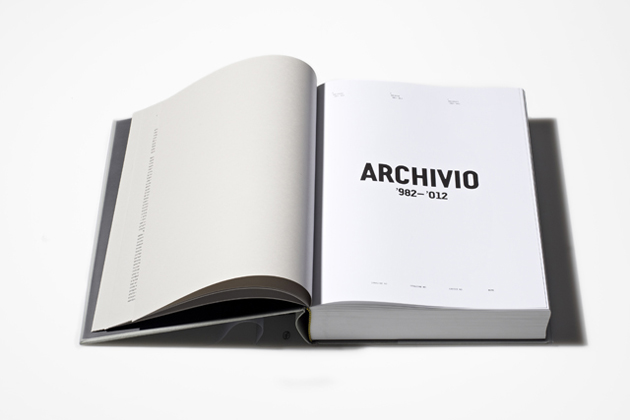
In June The Blogazine had the honour of meeting Carlo Rivetti, the creative director, CEO and strong entrepreneur behind Stone Island. At that moment the discussion was about Stone Island 30, a fantastic exhibition that we in many ways see as the ‘live version’ of the book. Or the stone as mr Rivetti calls it. “Well, if you have seen the book you know that it’s really a stone – so heavy!” we recall him telling us with laughter.
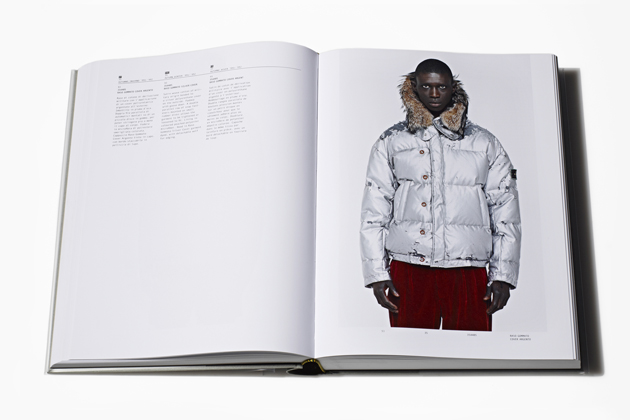
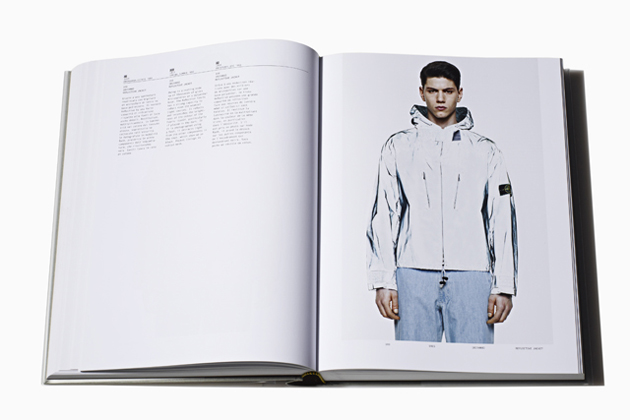
From the introductory words by Carlo Rivetti to the in-depth descriptions next to each picture, chronologically following from 1982 to 2012, one understands how much this archive of history means for Stone Island. Archivio ’982 – ’012 is a story through images and gives the studious a lot to take in regarding brand DNA, high technological techniques, fabrics and colours, and 30 years of sophisticated sportswear collections. When turning the pages in this image archive, it is an apparel history lesson. In the same time it shows how many of the garments, standing alone or sometimes even as a complete look, seem to be sort of timeless (well okay, maybe with a few adjustments).
Someone once told us about a writer who put lead in the cover of his book to make it appear heavier and therefore more important. Stone Island has instead filled its book with a story important enough in itself, making sure it will stand out among the books on the coffee table.
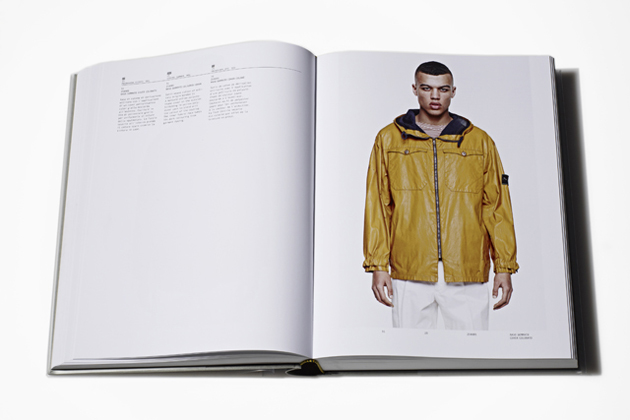
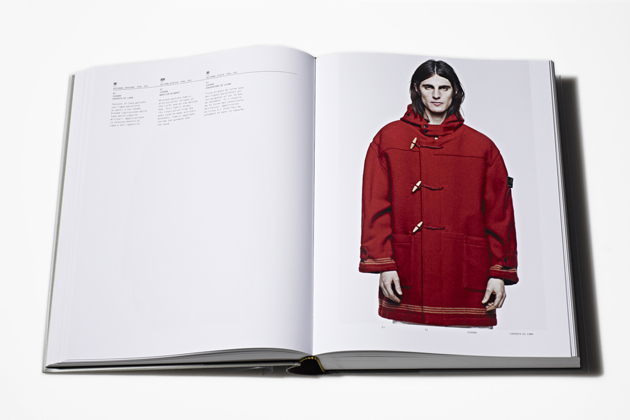
Archivio ‘982 – ’012 will after tonight’s presentation in Milan also be presented in Verona, Rome and London and will be for sale in bookshops and libraries as well as from Stone Island’s flagship stores and main retailers worldwide
Lisa Olsson Hjerpe – Image courtesy of Stone Island